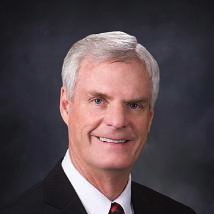Idaho will need a 5 percent increase in revenues to cover all of the state’s 2014-15 budget requests, including the K-12 public school budget increase Tom Luna submitted Oct. 1.
But Cathy Holland-Smith, manager of the Division of Financial Management, also presented budget scenarios Friday built around revenue increases of 3 and 4 percent. If lawmakers instead choose to build the budget around a more conservative revenue increase, the state would fall short of funding all agencies’ requests by $50 million or $21.9 million, respectively.
“(Next year) is going to be a little bit tricky,” Holland-Smith said.
Several lawmakers have already said money could be tight next year and large spending increases could be a stretch.
The Legislative Council – 14 lawmakers that oversee management of the Legislature and includes House and Senate leaders – spent most of Friday afternoon reviewing budget scenarios.
Holland-Smith’s budget overview broke the state budget into two parts — K-12 schools (the state’s largest budget expense) and everything else. Using that comparison, Luna’s proposed 5.4 percent spending increase is considerably smaller than the combined 11.2 percent increase submitted by other state agencies.
Lawmakers built the 2013-14 budget around a 5.2 percent revenue increase. If they used the same projection again there would be enough money for Luna’s proposal.
A 5 percent revenue increase, coupled with an estimated beginning balance of $88.9 million, would bring in just over $3 billion to the state general fund for 2014-15.

But spending increases are scrutinized closely at the Statehouse — and just because directors ask for money doesn’t mean they are going to receive it.
“We’re looking at what I think will be a fairly austere budget session,” said House Speaker Scott Bedke, R-Oakley. “It only goes so far and there will be this prioritization process.”
The Legislative Council made no binding decisions Friday, but offered up one of the first big previews of the session that opens Jan. 6.
On that opening day, Gov. Butch Otter will present his own budget recommendation, which will set the tone for the rest of the session. After that, the Joint Finance-Appropriations Committee will spend about two months convening budget hearings and writing individual agency budgets before the entire Legislature votes on them.
The budget process could become that much more interesting because legislative leaders are targeting next year as the shortest legislative session in a decade. Legislative Council members set a preliminary adjournment target of March 21, a 75-day session. The 2013 session ran 88 days, and 75 days would be the shortest session since the 69-day 2004 session.
From 2004 to 2013, sessions have run an average of 87 days.

Senate President Pro Tem Brent Hill, R-Rexburg, admitted that some lawmakers and pundits might laugh at the notion of adjourning by the third week of March.
But he cautioned skeptics not to bet against the deadline.
“We’re really serious,” Hill said. “We really think we can really make that a real target.”
Hill, the top-ranking member of the Senate, also predicted education would be a major focal point. He said the nearly unanimous agreement among Otter’s Task Force for Improving Education shows lawmakers there is value in working to implement the 21 recommendations.
“I get the feeling there is general buy-in in the Legislature, and a lot of it is because of the way it was handled (by the task force).”
